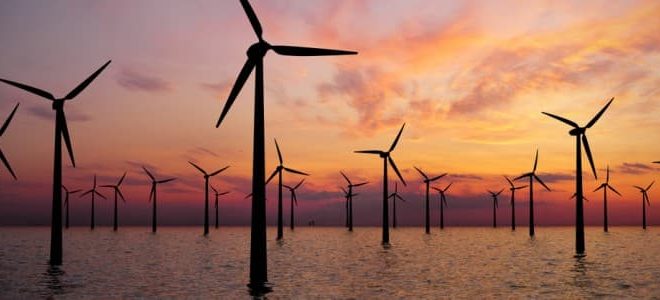Thanks to zero-carbon promises, wind farms are expected to overtake the number of oil rigs in British waters by 2030.
Oil majors are diversifying their energy production to evolve with the times. Both BP and Total have highlighted strategies for wind energy production in the U.K., with BP investing £924 million in the development of two sites.
In 2020, BP announced plans for net-zero carbon emissions by 2050. This ambitious offshore wind project appears to be BP’s way of putting its money where its mouth is. The company is partnering with German firm Energie Baden-Wuerttemberg (EnBW) to develop the sites in the Irish Sea.
Once the wind farms are fully operational, they could power as many as 3.4 million homes across the U.K. This contributes significantly to the government’s 10-point-plan to power all U.K. homes with wind energy, with the aim to produce 40GW by 2030.
Recently, BP also went ahead with partner Equinor to develop existing offshore wind in the U.S. at a cost of $1.1 billion. In September 2020, the company announced plans to advance a project that is expected to produce 50GW of renewable power by 2030, generating power for over two million houses.
“Offshore wind is growing at around 20 percent a year globally and is recognized as being a core part of meeting the world’s need to limit emissions.” CEO of BP, Bernard Looney, explained of the development.
The two wind projects come as BP pledged to spend $5 billion a year in low-carbon investments as part of its renewable energy strategy.
However, there has been criticism of BP’s high bid in the wind farm auction, with experts suggesting returns on the renewable investment may be low. This could be detrimental to users who may expect higher energy bills.
French oil giant Total also won in the auction, partnering with Macquarie’s Green Investment Group to secure a 1.5 GW project off the East Anglian coast. This sees the U.K. lending all suitable areas of its coastline to wind production.
Shell is also working with Dutch company Eneco to develop offshore wind. The partnership is expected to establish wind farms off the coast of the Netherlands.
The diversification of energy production is seeing majors win big in the stock markets. Those with strong renewable energy portfolios are faring significantly better than oil firms with few renewable investments.
BP’s new investment looks promising as its stock price increased from $20.75 on Friday 5th to $22.05 following the wind auction win on Monday 8th.
Oil majors are perhaps investing in offshore projects as it is familiar territory. Oil and gas firms already have extensive experience in constructing and operating facilities in these waters, making it less of a gamble.
The U.K. offers the perfect environment to invest in wind, reaching targets of 40 percent electricity production from wind energy in December, generating 17.3GW. British coastlines are well known for their blustery nature, which lends them to wind energy production.
As oil demand begins to bounce back, helping oil majors rally from the 2020 lull, diversification of their energy portfolios could see them make gains all round. With calls for greener practices over the next decade, the oil and gas sector could flourish in the area of renewable energy by 2030.

 Iran Energy News Oil, Gas, Petrochemical and Energy Field Specialized Channel
Iran Energy News Oil, Gas, Petrochemical and Energy Field Specialized Channel



